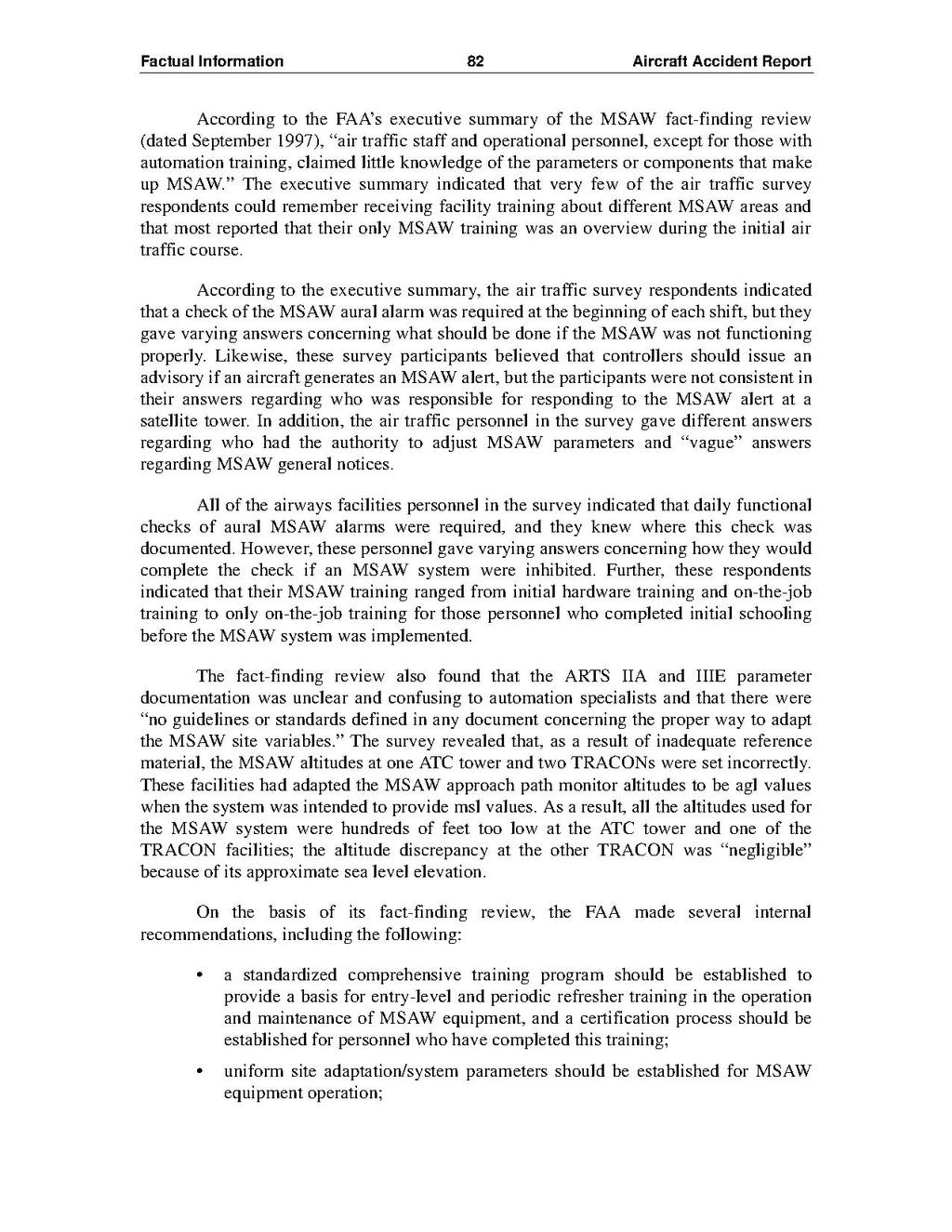According to the FAA's executive summary of the MSAW fact-finding review (dated September 1997), "air traffic staff and operational personnel, except for those with automation training, claimed little knowledge of the parameters or components that make up MSAW." The executive summary indicated that very few of the air traffic survey respondents could remember receiving facility training about different MSAW areas and that most reported that their only MSAW training was an overview during the initial air traffic course.
According to the executive summary, the air traffic survey respondents indicated that a check of the MSAW aural alarm was required at the beginning of each shift, but they gave varying answers concerning what should be done if the MSAW was not functioning properly. Likewise, these survey participants believed that controllers should issue an advisory if an aircraft generates an MSAW alert, but the participants were not consistent in their answers regarding who was responsible for responding to the MSAW alert at a satellite tower. In addition, the air traffic personnel in the survey gave different answers regarding who had the authority to adjust MSAW parameters and "vague" answers regarding MSAW general notices.
All of the airways facilities personnel in the survey indicated that daily functional checks of aural MSAW alarms were required, and they knew where this check was documented. However, these personnel gave varying answers concerning how they would complete the check if an MSAW system were inhibited. Further, these respondents indicated that their MSAW training ranged from initial hardware training and on-the-job training to only on-the-job training for those personnel who completed initial schooling before the MSAW system was implemented.
The fact-finding review also found that the ARTS IIA and IIIE parameter documentation was unclear and confusing to automation specialists and that there were "no guidelines or standards defined in any document concerning the proper way to adapt the MSAW site variables." The survey revealed that, as a result of inadequate reference material, the MSAW altitudes at one ATC tower and two TRACONs were set incorrectly. These facilities had adapted the MSAW approach path monitor altitudes to be agl values when the system was intended to provide msl values. As a result, all the altitudes used for the MSAW system were hundreds of feet too low at the ATC tower and one of the TRACON facilities; the altitude discrepancy at the other TRACON was "negligible" because of its approximate sea level elevation.
On the basis of its fact-finding review, the FAA made several internal recommendations, including the following:
- a standardized comprehensive training program should be established to provide a basis for entry-level and periodic refresher training in the operation and maintenance of MSAW equipment, and a certification process should be established for personnel who have completed this training;
- uniform site adaptation/system parameters should be established for MSAW equipment operation;
